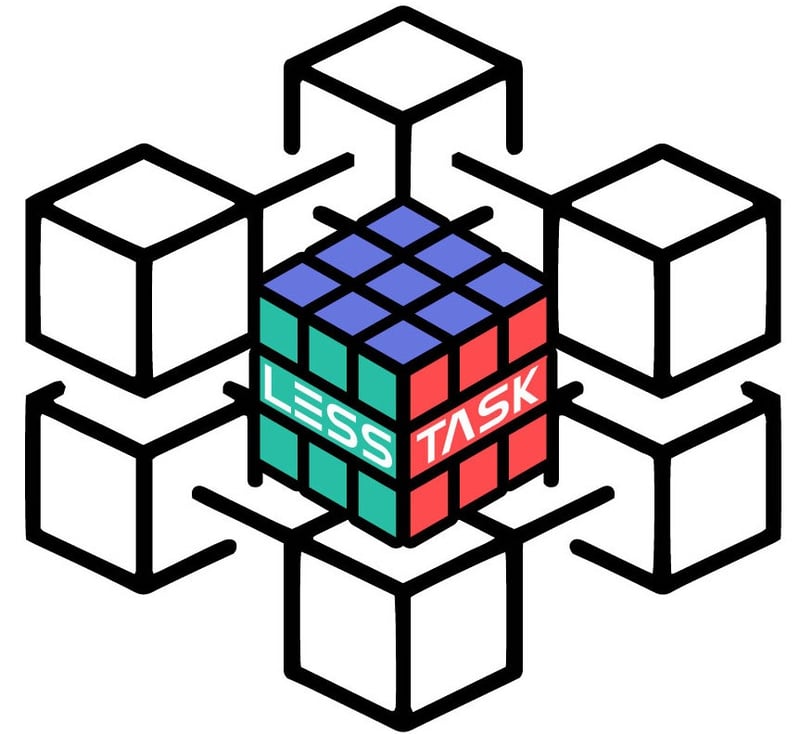LessTASK | Support System - Facilitating Web 3 adoption
Lets explore the differences between Web 2 and Web 3!
4/27/20243 min read


Understanding the Difference Between Web 2.0 and Web 3.0
The internet has evolved significantly since its inception. We've moved from static pages to dynamic content, and now we're on the brink of another major transformation. This evolution is often categorized into different stages: Web 1.0, Web 2.0, and the emerging Web 3.0. In this article, we'll explore the key differences between Web 2.0 and Web 3.0, and what these changes mean for users and developers alike.
What is Web 2.0?
Web 2.0, often referred to as the "read-write" web, is the version of the internet most of us are familiar with today. It marked a significant shift from the early days of the internet (Web 1.0), which primarily consisted of static pages that users could only read. Web 2.0 introduced a more interactive and social experience.
Key Characteristics of Web 2.0:
User-Generated Content: Platforms like YouTube, Facebook, and Twitter allowed users to create, share, and interact with content.
Social Media: The rise of social networks facilitated global communication and community building.
Dynamic Content: Websites became more responsive and interactive, often using technologies like AJAX to update content without refreshing the page.
Centralization: Most Web 2.0 platforms are centralized, meaning they are controlled by single entities or corporations that manage and store user data.
Advertising Revenue Model: Many Web 2.0 companies generate revenue through targeted advertising, using data collected from users to personalize ads.
What is Web 3.0?
Web 3.0, also known as the "semantic web" or "decentralized web," represents the next phase of internet evolution. It aims to address some of the limitations and challenges of Web 2.0 by introducing new technologies and concepts.
Key Characteristics of Web 3.0:
Decentralization: Unlike Web 2.0, Web 3.0 operates on decentralized networks, reducing reliance on central authorities. Blockchain technology is a key enabler of this decentralization.
Enhanced Privacy and Security: Web 3.0 prioritizes user privacy and security, giving individuals more control over their data and reducing the risks associated with centralized data storage.
Smart Contracts: These self-executing contracts with the terms of the agreement directly written into code allow for trustless transactions and interactions, eliminating the need for intermediaries.
Interoperability: Web 3.0 applications are designed to work seamlessly across different platforms and devices, enhancing user experience and accessibility.
Tokenization: Digital assets and cryptocurrencies play a central role in Web 3.0, enabling new economic models and incentives for participation and contribution.
Key Differences Between Web 2.0 and Web 3.0
Control and Ownership:
Web 2.0: Controlled by centralized entities, leading to issues with data privacy and control.
Web 3.0: Emphasizes decentralization, giving users more control over their data and digital identities.
Data Handling:
Web 2.0: User data is often stored on centralized servers, making it vulnerable to breaches and misuse.
Web 3.0: Data is distributed across a network of nodes, enhancing security and reducing the risk of centralized points of failure.
Monetization:
Web 2.0: Relies heavily on advertising and the sale of user data for revenue.
Web 3.0: Utilizes token-based economies and decentralized finance (DeFi) models, offering new ways to earn and transact.
User Interaction:
Web 2.0: Primarily involves social media, content creation, and sharing.
Web 3.0: Enables more complex interactions through smart contracts, decentralized applications (dApps), and digital assets.
Why Web 3.0 Matters
The transition to Web 3.0 promises to reshape the digital landscape by empowering users, enhancing security, and fostering innovation. It opens up new possibilities for how we interact with technology and with each other, paving the way for a more equitable and decentralized internet.
As we move forward, understanding the differences between Web 2.0 and Web 3.0 will be crucial for navigating this evolving digital world. Whether you're a developer, entrepreneur, or everyday internet user, staying informed about these changes will help you make the most of the opportunities that lie ahead.
